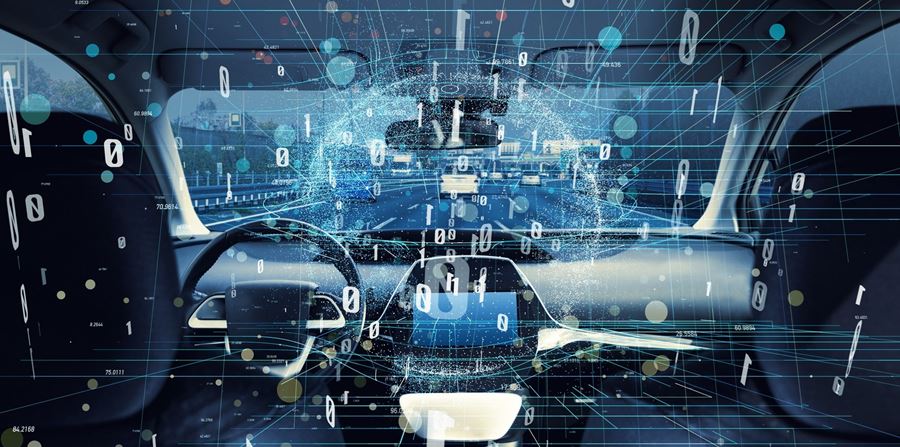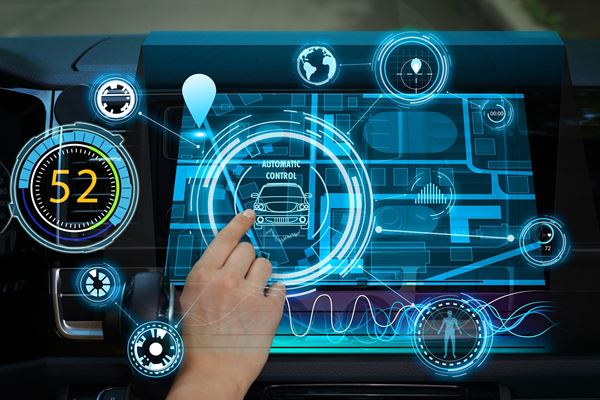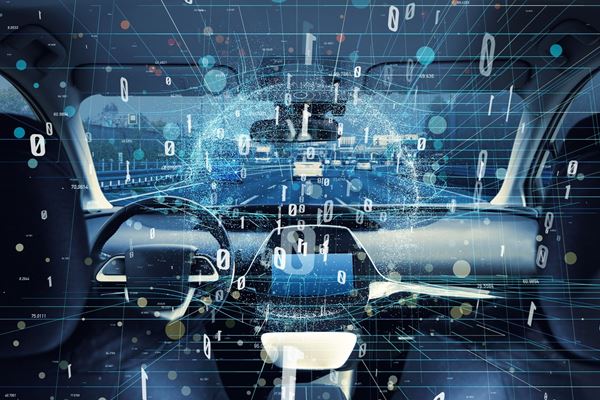How Emerging Technologies Impact Vehicle Accident Reconstruction

Over the last several years, advancements in vehicle technologies and safety systems have significantly affected how vehicle collisions are investigated and reconstructed. In particular, the amount of digital information that can be extracted from a vehicle (or from other devices within a vehicle) has dramatically increased. With the ever-changing state of digital data, it is pertinent for an investigator to be knowledgeable of the digital systems in a vehicle, including knowing how they function, how to extract and/or download the data in a forensically sound manner, and how to accurately analyze the data.
With the introduction of cloud-based, remotely updateable, and interconnected systems, such as the live data sharing between vehicles and manufacturers (e.g., Tesla), the automated OnStar systems installed in General Motors (GM) vehicles, or the hands-free driving systems in Tesla (Autopilot), Ford (BlueCruise), and GM (Super Cruise) vehicles, even more advancements in technology have been introduced into the field of Vehicle Accident Reconstruction (VAR). Each of these technological advances provides additional data for analysts to extract, analyze, and utilize while reconstructing an accident.
Following a vehicle accident, a VAR analysis can reveal important information about the circumstances of a collision, including (but not limited to) the pre-impact speeds and movements of the vehicles, the orientations, locations, and speeds of the vehicles at the time of impact, the potential for a driver to have avoided the collision, and determination of seatbelt use.
Types of Digital Data Used in VAR Investigations
Modern vehicles have tens, if not hundreds, of electronic modules that monitor and control vehicle functions. Many of these modules record vehicle data that can be downloaded or extracted, whether recorded continuously or at the onset of a trigger. Below are the main sources of data utilized by VAR experts in their investigations, with a brief description and examples of each.
Event Data Recorders (EDRs)
Colloquially referred to as a “black box”, the EDR is a module within a passenger vehicle or light truck that records data when sensors on the vehicle exterior sense a collision. In the majority of vehicles equipped with an EDR, the EDR data is recorded by and stored within the airbag control module. Over half of the vehicles on the road today are equipped with a downloadable EDR and approximately 99% of new vehicles (manufactured in 2013 or later) are equipped with EDRs.
In most EDRs, recorded data includes five seconds of pre-crash information and less than half a second of post-crash information. The pre-crash data is typically a time series and includes data for vehicle speed, steering wheel angle, brake and accelerator pedal use, cruise control status, and seatbelt statuses (among many others).
Heavy Vehicle Event Data Recorders (HVEDRs)
Commercial vehicles, such as buses, tractor-trailers, or dump trucks, can also be equipped with an EDR. However, the colloquial term for these EDRs is HVEDR (i.e., Heavy Vehicle Event Data Recorder). Like a passenger vehicle EDR, an HVEDR begins recording data on the trigger of an event (i.e., typically a change in wheel speed above a threshold rather than a sensor detecting a collision). To preserve the HVEDR data after a collision, the vehicle must be turned off and the keys should be removed. If the vehicle needs to be towed/moved, the driveshaft should be disconnected.
Infotainment and Telematics Systems
The infotainment system in a passenger vehicle is the integrated media system that interacts with passengers to control the interior functions of a vehicle (e.g., stereo volume, interior temperature, seat heaters, etc.). It is typically connected to the back of the touchscreen installed in the centre console of newer vehicles. As many infotainment systems have built-in GPS/navigation, the necessary positioning data and telematics information are being provided to the infotainment system.
Unbeknownst to most people, the infotainment system can record a significant amount of vehicle and user information, including data transmitted from a cellphone connected via Bluetooth or USB cable. For example, infotainment systems can be downloaded to extract call logs, contact lists, images, text messages, and GPS data (i.e., saved locations, past routes/destinations, time series tracklogs). Data from a supported infotainment system can be invaluable for both civil and criminal investigations, as it can be used by investigators for VAR purposes, stolen vehicle or homicide cases, or for cases involving a possible incident of distracted driving.
Collision Mitigation Systems
Collision mitigation systems are found in both passenger and commercial vehicles. They are manufacturer-supplied safety systems that are specifically designed to mitigate the severity of collisions and include functions such as Automatic Emergency Braking (AEB), Front Collision Warning (FCW), or Automatic Cruise Control (ACC). These systems use sensors, radar, and cameras to monitor the vehicle exterior and warn the vehicle and driver of potential collisions.
The data used by a collision mitigation system (during its decision-making process), as well as data captured during a collision or near-collision event, can be recorded by the vehicle and later downloaded by trained personnel. Downloadable data can include time series data as well as photographs and/or videos from the camera module. Collision mitigation system data is especially useful in pedestrian impacts or low-speed collisions, as an event doesn’t have to meet a severity threshold to be recorded.
Global Positioning Systems (GPS)
Although uncommon nowadays, consumer-grade GPS devices (such as Garmin or TomTom handheld units) can record vehicle speed and location information, which can be extremely useful for collision investigations. Data can be extracted using manufacturer software and imported into more accessible formats for viewing against aerial imagery. GPS devices can also be present inside other devices, such as smart watches, dashcams, bicycle computers, or cell phones. In most cases, the GPS data recorded by these devices can be downloaded and utilized for VAR analyses.
It should be noted that unless the GPS device is connected to modules within the vehicle, GPS speeds are calculated using a known time and distance between points, resulting in speeds that represent averages between points. Thus, they do not account for acceleration or deceleration events, and during large gaps of GPS points, or in cases of low refresh rates, GPS speeds tend to be significantly inaccurate.
Video
With the prevalence of dashcams and CCTV cameras, video evidence is becoming more and more common. Video can be used as a primary source of evidence (e.g., to determine vehicle speeds or pre-impact movements) or as a supplemental source, as it can provide information about a collision that no other data source can (e.g., timing between collisions, traffic signal color, temporary sightline restrictions, etc.). An analyst may need to validate vehicle positions and video timing using supplemental sources if only a short timeframe of video is being used for analysis.
Modern collision reconstruction is highly focused on the collection and analysis of intricate and complicated data. Whether that means extracting sophisticated digital data from vehicles, cellphones, or dashcams, using a 3D scanner to compare the crush profile of a damaged vehicle to an undamaged vehicle, using a remotely piloted aircraft to measure and document a collision scene, or creating a photorealistic computer simulation of the pre-and post-collision vehicle movements, advancements in technology have significantly increased the accuracy of collision analyses. The amount and complexity of data are only going to increase, furthering the need for a qualified analyst to extract and analyze the data.
Our experts are ready to help.




